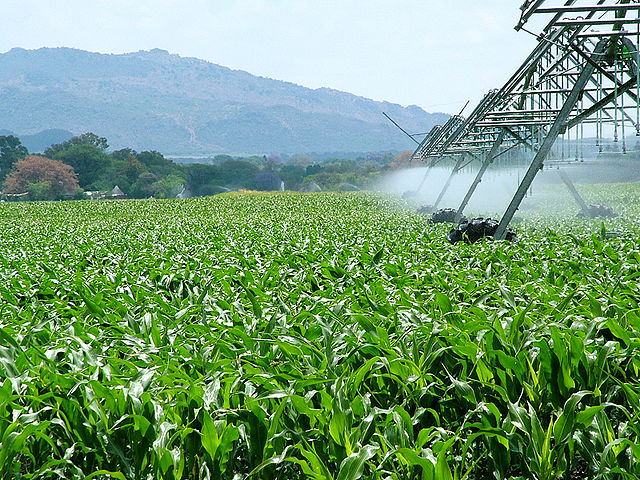Agriculture in Africa will partially benefit from a 360 billion-yuan ($50.7 billion) pledge at the China-Africa Forum in Beijing on September 4, 2024.
Gracing the largest Sino-African forum since COVID-19 were China’s leader Xi Jinping and the United Nations’ secretary general Antonio Guterres.
In the summit, Africa’s leaders discussed with the host various trade incentives , a part of which being the $50.7 billion fund.
Out of this kitty, agriculture will gain directly and also indirectly from allocations to the transport infrastructure and investment sectors.
Spillover from Transport Infrastructure Funding
In indirect terms, Africa’s most important sector will gain from spillover investments in the transport network funding. These, especially modern rail networks, convey the bulk of the continent’s fresh produce to long distance markets.
It is such links that leaders from Zimbabwe, Tanzania, Zambia and Kenya cited at the forum as important for agricultural trade.
For one, President Samia S. Hassan of Tanzania called for the expansion of the trailblazing rail connections with Zambia.
Reports already show that even before the China-Africa summit, Zambia was to receive $1 billion in transport financing from China. According to President Hakainde Hichilema on the summit’s sidelines, the country is also concluding a private solar energy deal with China.
In its part, Zimbabwe has got backing by Beijing at the summit specifically in agriculture and eco-friendly transport infrastructure.
Meanwhile, Kenya’s President, William Ruto, recounted the expansion of the country’s China-built expressway from Nairobi to the coast. East Africa’s biggest economy has seen many mega rail projects via firms from China, beginning the early 2000s.
Ruto also reiterated that Xi has given his word to increase the volume of Kenya’s agricultural merchandise in China.
In August 2022, Beijing gave a nod to the export of avocados from Kenya, a move that farmers celebrated.
China is currently endeavoring to help African nations modernize their farming systems through technology and agricultural machinery.
On the mechanization aspect, Africa’s agriculture could achieve industrialization through the input of tractors and harvesters.
But it is technology where Sino-African relations hold the greatest promise, including e-commerce sites to deliver farmers direct pricing. The use of satellite crop monitoring, precision farming and GPS sensors can also boost crop productivity and eradicate pests.
In short, the September 2024 China-Africa Forum shows that agriculture in Africa could industrialize through funding. To learn more about the current status of continental agriculture by global terms, read on in the statistics section next.
Agriculture in Africa Statistics
This section concentrates on land use and production aspects of the arguably vast topic. Regarding land, Africa had the third highest regional agricultural land area at 1.1 global hectares (gha) in the decade between 2007 and 2016. This represented 24% of the worldwide agricultural land, according to the Food and Agriculture Organization (FAO). Only the continents of Asia at 1.1 gha (34%) and the two Americas at 1.2 Gha (25%) had more farmland. Interestingly, Sudan had the most agricultural land in Africa up to 2017 but not the most cropland, which went to Nigeria.
Which country in Africa grows the most crops?
FAO data for the period between 2007 and 2016 shows that China led world cropland area at 500 million hectares. Nigeria was the only African nation in the top 10 by cropland area, at number 9. By 2021, Nigeria’s cropland had reached 70.8 million hectares, serving as a basis of the country’s economical growth. For instance, in the first three months of 2021, agriculture contributed 22.35% to the national GDP. LIke in cropland, Nigeria also leads Africa in sorghum production, with a 30% global production share per annum.
How does Africa fare in global animal product output?
Though Africa boasts a robust animal herd, its meat production represents just 6% of the global output, as of 2020. However, production grew double in two decades, from 11.59 million tonnes in 2000 to 19.88 million tonnes in 2021. Poultry meat is Africa’s biggest meat source and accounted for almost a third of all meat at 6.8 million tonnes in 2020. In hen’s egg category, Africa provided 4% of the global total, a far cry from Asia’s 62.1% lead share.
Which country produces the most maize in Africa?
Though maize is a staple diet in Africa, the continent’s output trails that of leaders India, Brazil, the U.S., Russia and China. South Africa led continental production in 2022 at 16.14 million tonnes while Nigeria came second at 12.95 million tonnes. In comparison, China topped the global tally at 277.2 million tonnes in 2022.
